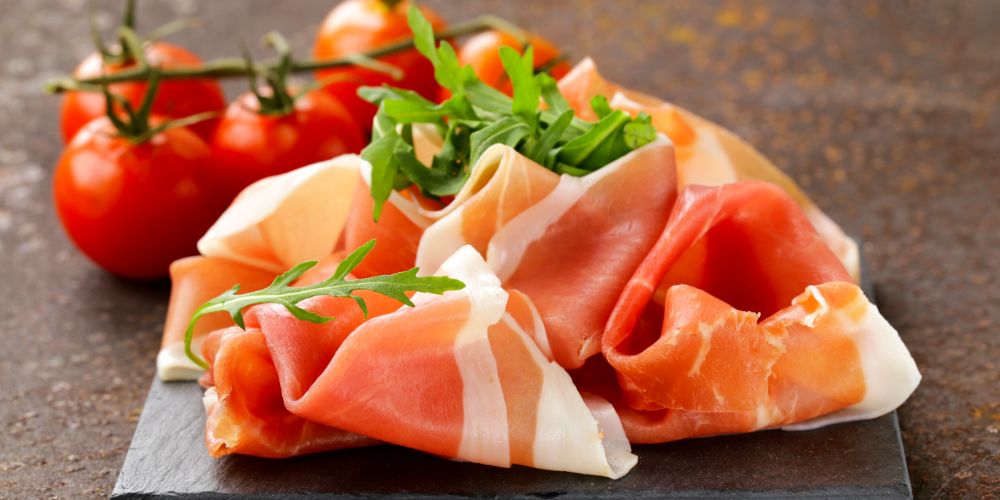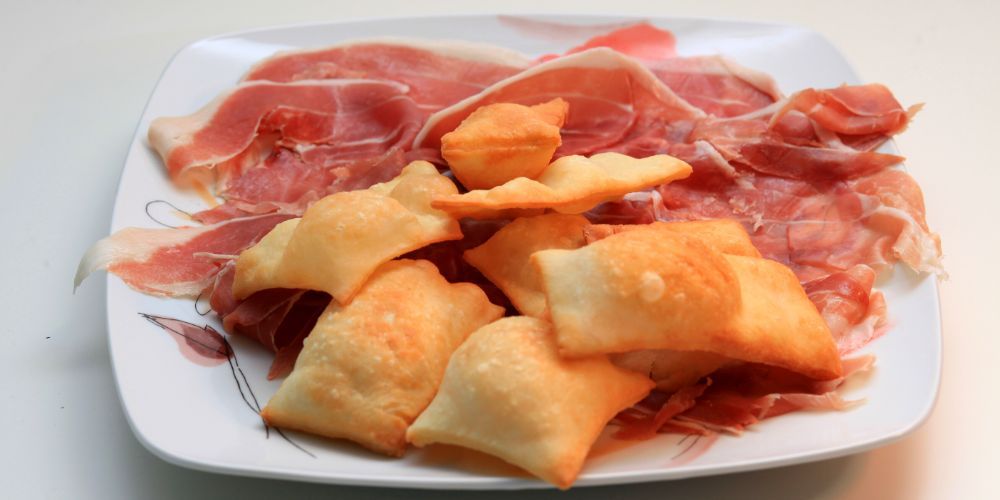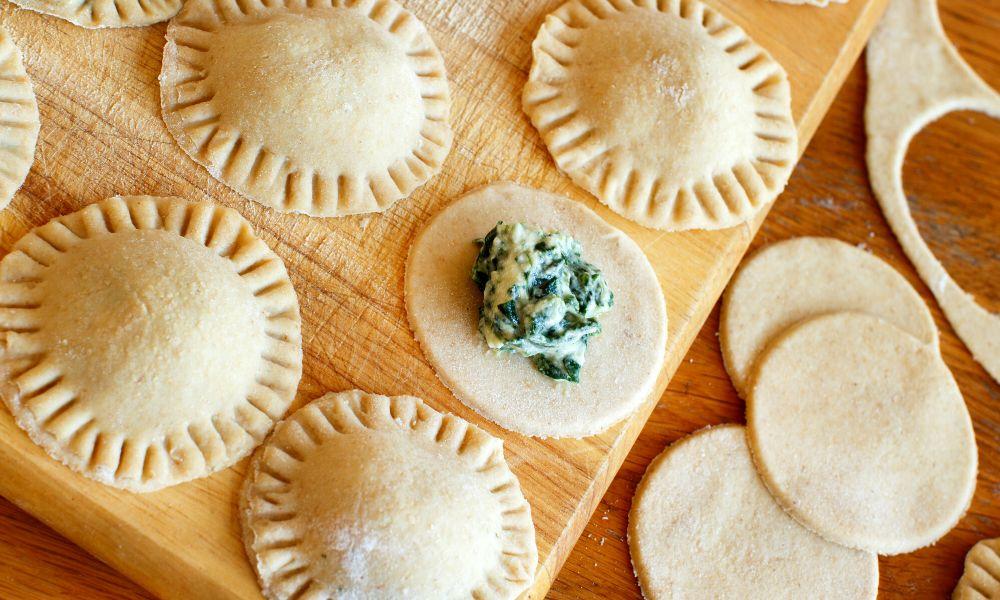Parma has been nominated as a Creative City by UNESCO. Why? Its amazing cuisine, which unmissable traditional dishes we are now sharing with you.
Among the UNESCO sites of the Emilia Romagna region in Italy, Parma has truly stood out since 2015. Not just for its amazing historical, artistic and cultural heritage, but also for its many culinary delights. So many are the traditional dishes of Parma, which are also renowned in each part of the world.
We are sure you have heard about the typical Prosciutto Crudo di Parma (Parma ham) or about the Parmigiano Reggiano (Parmesan Cheese). So abundant is this city with culinary examples that we are truly looking forward to explaining to you.
It will be a tasty appetizer before you come here and taste them all!
So, let's begin our Parma food tour.

Parma, 'Creative City of Gastronomy': where the food becomes UNESCO heritage
In this part of Italy, there are so many places famous for their culinary delights. So many Italian traditional dishes, in fact, come from here, Emilia Romagna region, renowned also as the Food Valley. And, of course, Parma is the capital of this area.
Parma, in fact, holds a record breaking number of local products protected by DOP (Denomination of Controlled Origin) and IGP (Protected Geographical Indication) marks. For these reasons, Parma could not but catch the attention of UNESCO and its Network of 'Creative Cities'.
What's the meaning of 'Creative Cities'?
UNESCO considers that the cities are the starting point for many projects that aim to better the quality life of the citizens all over the world, according to the 17 Sustainability Goals by ONU to be accomplished by 2030.
According to the UNESCO organization, in fact, developing creativity and projects based on sharing and improvement of the local values you can find in every place, is a great way to accomplish those goals. That's why the 'Creative Cities' by UNESCO were born, and Parma has been part of them since 2015.
Now, scattered all over the world, there are 246 cities. They are subdivided into 7 different clusters, considering their specialties: Craft and Folk Art, Design, Cinema, Food, Literature, Music and Digital Art.
Besides Parma, other 2 cities of Emilia Romagna region are 'creative': they are Bologna for its Music and Modena for its Digital Art.
Considering these great recognitions, it's the perfect moment to come here and enjoy an Emilia Romagna UNESCO tour, departing from Parma and its excellent cuisine. Then you might go to Modena and explore not just its center but also the innovation applied to art, and then go to Bologna and explore its music. After that, Faenza with its magnificent ceramics, Ferrara with its great historical center and Ravenna with its unforgettable mosaics.
Why 'Creative city': the importance of food in Parma
Parma's wonderful cuisine attracted the attention of UNESCO in 2015 when it was named a 'Creative City.' In any case, it is not only about the excellent culinary variety, but also about its value from a social, cultural and economic point of view in the city of Parma.
Consider, for example, that in Parma about 30 percent of the inhabitants are employed in the agribusiness sector! But that's not all.
The EFSA (European Food Safety Authority), Europe's top food safety authority, is headquartered right here in Parma. Not to mention that the province, in Colorno, is home to Alma, the International School of Cuisine, founded in 2003 and linked to the name of the man who was able to transform Italian cuisine and make it what it is today: the late Chef and gastronome Gualtiero Marchesi.
Then let's not forget Cibus Connecting Italy, an international trade fair that for more than two decades has been one of the most important references for workers in the agri-food sector, or all the Museums dedicated to food. Here in Parma in fact we have the Prosciutto di Parma Museum, the Pasta and the Salame di Felino one!
In short, this brief overview alone should make us understand why UNESCO has made Parma part of the 'Creative Cities' circuit. And not only is it part of this circuit, but from 2021 it is part, together with Bergamo and Alba, of the UNESCO Creative Cities Gastronomic District!
A prestigious recognition not only for all the innovations under the banner of creativity and sharing in which Parma is engaged, but also, as we well know, for other very delicious reasons.
So, let's taste them all! Virtually, of course (but just for now).
Reserve your visit at the Prosciutto di Parma Museum!❯
Parma traditional food tour: what is unmissable
The nomination as 'Creative City' in 2015 by UNESCO can only be further confirmation for Parma, a city that, in the heart of Italy's Food Valley, is known everywhere in the world for its excellent cuisine.
Its typical products and traditional dishes, which have always been imitated, are finally recognized as coming from this extraordinary place.
During a Parma food tour, what should you try?
One cannot but start with the hosts, Prosciutto Crudo di Parma and Parmigiano Reggiano. However, it would be a bit reductive to stop just there.
Hams and cold cuts typical of Parma and surroundings
In the many farm houses, restaurants, but also prosciuttifici (prosciutto manufacturer), let yourself be tempted by Salame di Felino (produced right in Felino), Prosciutto di Langhirano, or Culatello di Zibello, the king of cured meats in Parma souther area.
But also from Cotechino and Zampone di Modena, a must on Christmas tables, perhaps accompanied by lentils, or Coppa di Parma and Spalla Cotta di San Secondo, a cured meat that is part of the local Parmesan tradition.
The typical and tasty 'torta fritta' or 'gnocco fritto'
You cannot say you have been to Parma if you have not had 'torta fritta' at least once. Even if this expression in Italian means 'fried cake', it has nothing to do with cakes or sweets. It's a fried bread made with flour, water and lard (or olive oil).
Parma is the homeland of 'torta fritta', also called 'gnocco fritto', which is served with cured meats and cheeses or enjoyed as an appetizer or bread substitute.
Traditionally it is to be eaten freshly made, therefore piping hot!
Egg pasta, the main product of many traditional recipes in Parma, Italy
Of the typical Parma cuisine, however, one cannot miss all the varieties of egg pasta:
- The 'anolini', which are also called 'cappelletti' here, are round in shape and filled with stale bread, Parmesan cheese, beef stew, egg yolk and spices. In other parts of Emilia, however, the two pastas are different, and 'anolini' are those that contain no meat but a cheese filling. They are best enjoyed with butter and sage or, even better, in broth;
- The traditional 'tortelli d'erbetta', filled with spinach, Parmigiano, fresh ricotta and served with a generous sprinkling of Parmigiano.
Cakes and desserts typical of Parma
When it comes to desserts, Parma's cuisine also offers several excellences.
Let's start with the most famous dessert, Torta Duchessa di Parma, dedicated to the beloved Duchess Maria Luigia of Parma, is prepared with hazelnut flour and has a delicious filling of zabaglione and chocolate custard. From this area, in particular from Busseto, comes Torta Torronata, very tasty and prepared from leftover nougat, but also Torta Nera di San Secondo, named after the town of the same name where it originated, prepared with almonds, chocolate and coffee.
And between castagnacci (cake made with chestnut flour) and spongate (prepared with dried fruits), we cannot but end our tour with Scarpette di Sant'Ilario, literally 'little shoes of Saint Ilario', delicious cookies prepared to celebrate the patron saint of the city of Parma on January 13.
And, therefore, a more than deserved UNESCO nomination for the city of Parma.
We hope that this virtual food tour will soon translate into a direct experience for you!







